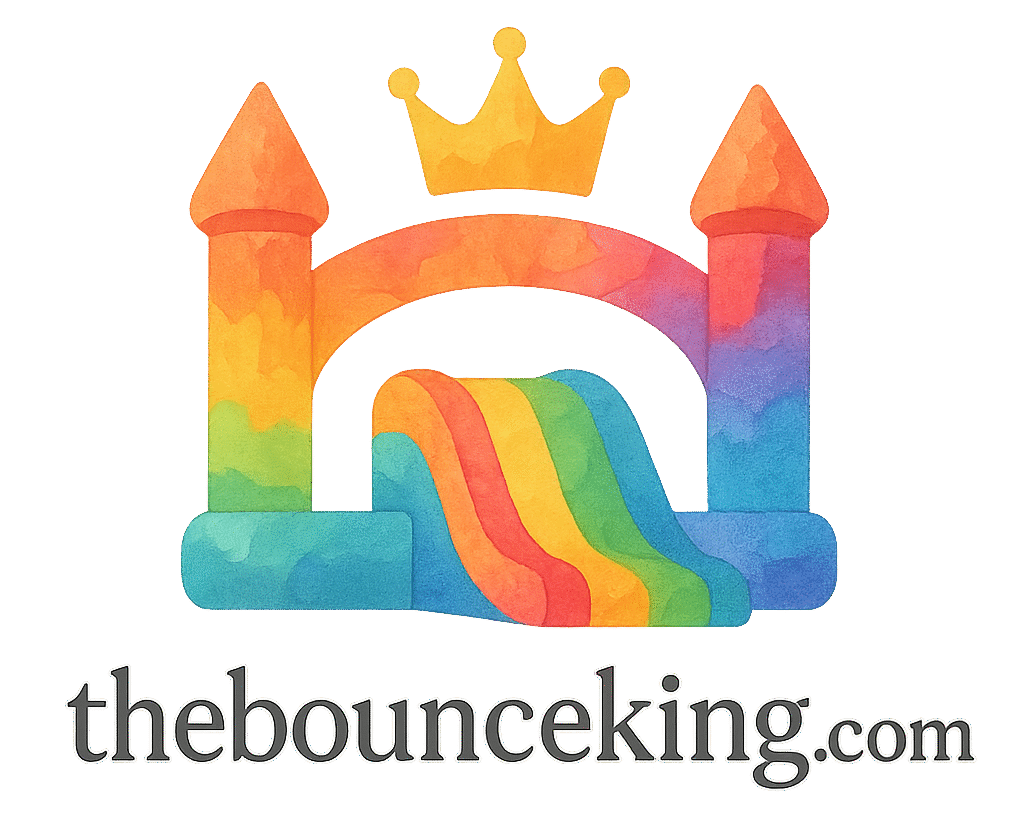Introduction: The Fun and Risk of Bounce Events
Bounce events are an exciting way to celebrate special occasions, enjoy outdoor fun, or simply engage in a good time with family and friends. Whether it’s at a birthday party, a corporate event, or a community gathering, inflatable bounce houses bring joy to people of all ages. However, despite the fun, it’s essential to remember that bounce events come with risks.
While injuries aren’t frequent, they can happen, and it’s crucial to understand how to prevent them. In this article, we will delve into the six most common injuries that can occur during bounce events and provide helpful tips on how to keep everyone safe while still enjoying all the bouncy fun. For more safety tips and bounce rental options, check out Bounce Safety Tips and Inflatable Bounce Rentals.
Understanding the Importance of Safety at Bounce Events
Safety should always be a priority at any event involving inflatable equipment. Whether you’re renting a bounce house for a child’s party or setting up a large inflatable slide at a corporate event, understanding the inherent risks involved can help mitigate the chances of accidents. Proper preparation, safety guidelines, and supervision are essential components of creating a safe environment.
What are Bounce Events?
Bounce events involve the use of inflatable structures like bounce houses, obstacle courses, and slides that are designed to be fun and engaging. These inflatable attractions allow guests, especially kids, to jump, slide, and bounce around freely. They’re common at outdoor parties and events and provide endless entertainment. However, due to the physical nature of these activities, accidents can occur, making safety a critical aspect.
Common Injuries at Bounce Events
While bounce houses and inflatable slides are generally safe, they are not without risks. The following are some of the most common injuries that can occur at bounce events:
Sprains and Strains
One of the most frequent injuries in bounce houses is sprains and strains. These happen when a person overstretches or twists a joint or muscle. With the constant jumping and bouncing, it’s easy to land awkwardly, especially on the soft, uneven surface inside a bounce house. While these injuries may not be severe, they can cause pain and discomfort and require some rest to heal.
How to Prevent Sprains and Strains:
To prevent sprains and strains, encourage children to jump in controlled movements and avoid performing acrobatic stunts. You can also ensure that the bounce house is adequately inflated, as a poorly inflated structure can lead to uneven surfaces and increase the risk of injury.
Fractures and Broken Bones
Although rare, fractures or broken bones can occur if someone falls awkwardly or collides with others during a jump. The most common fractures involve the wrists, arms, and legs, typically resulting from a person trying to break their fall. These injuries may be more severe and require immediate medical attention.
How to Prevent Fractures and Broken Bones:
To reduce the risk of fractures, it’s important to follow safety rules such as restricting rough play and ensuring the bounce house is free from obstacles. Make sure the inflatable is placed on soft, flat ground to minimize the impact if someone falls.

Concussions and Head Injuries
Concussions are one of the most serious injuries that can occur at bounce events. This type of injury can happen if a person hits their head on the walls of the bounce house or collides with another jumper. Though not as common as sprains, head injuries should always be taken seriously, as they can have long-term consequences.
How to Prevent Concussions and Head Injuries:
Supervision is key when it comes to preventing head injuries. Ensure that children and adults are jumping appropriately and not trying to do flips or somersaults. Limiting the number of people inside the bounce house at any given time can also reduce the risk of collisions.
Cuts, Bruises, and Abrasions
With all the jumping and bouncing, minor cuts, bruises, and abrasions can occur. These injuries are typically less severe but still need attention. A rough landing or a bump against an inflatable wall can cause small scrapes or bruises. While they might not be life-threatening, these injuries can still cause discomfort.
How to Prevent Cuts, Bruises, and Abrasions:
Ensure that the bounce house is made of soft, durable materials that won’t cause cuts or abrasions. It’s also important to remove any debris or sharp objects from the vicinity before setting up the bounce house.
Ankle and Knee Injuries
Ankle and knee injuries, such as sprains or ligament tears, are common when individuals land awkwardly or attempt sudden movements in the bounce house. These injuries can be particularly problematic for children, whose coordination might not be fully developed yet.
How to Prevent Ankle and Knee Injuries:
Encourage safe jumping practices, such as keeping feet flat on the surface when landing and avoiding rough or forceful movements. Make sure that the bounce house is designed for age-appropriate use and that the ground beneath it is level.
Back and Neck Injuries
Back and neck injuries can occur if someone lands on their back or neck during a jump or falls from a height. These injuries are more serious and require immediate medical attention. It is essential to take steps to prevent these types of accidents to avoid long-term health consequences.
How to Prevent Back and Neck Injuries:
To reduce the risk of back and neck injuries, set clear rules about not diving or attempting dangerous stunts. Keep an eye on participants and make sure they follow safe jumping guidelines. If an injury occurs, seek medical advice immediately.
How to Prevent Injuries at Bounce Events
Prevention is always better than cure, and there are several ways to ensure a safe and injury-free bounce event.
Safety Tips for Bounce Houses
Make sure that your bounce house is certified and meets safety standards. Check for any punctures, tears, or wear and tear before use. Additionally, always ensure that the inflatable is securely anchored to prevent it from tipping over during use.
For more bounce safety tips, visit Bounce Safety Tips.
Importance of Supervision
Having adequate supervision is one of the most important aspects of preventing injuries at bounce events. Assign responsible adults to monitor the activity and ensure that participants follow the safety rules.
Proper Bounce Equipment Maintenance
Regular maintenance of the inflatable equipment is crucial for safety. Ensure that all inflatables are properly inflated and that there are no holes or weak spots that could lead to accidents. You can also look into professional maintenance services for a thorough inspection.
Age and Weight Restrictions
It’s essential to follow the age and weight guidelines provided by the manufacturer. Bounce houses are designed for specific age groups and weight limits, and exceeding these can increase the risk of injury.
Safe Landing Techniques
Encourage participants to jump safely, with their feet firmly planted on the ground when landing. This can reduce the likelihood of twisting an ankle or suffering other lower limb injuries.
Bounce Event Venue and Staff Safety
Choose reputable bounce event venues that have trained staff members familiar with bounce house safety protocols. Properly trained staff can help in the event of an emergency and guide guests on how to use the equipment safely.
When Should You Seek Medical Attention?
If an injury occurs, it’s important to assess whether immediate medical attention is necessary. Symptoms like swelling, bruising, or difficulty moving a limb could indicate more serious injuries such as fractures or sprains.
Conclusion: Ensuring a Safe and Fun Experience
While injuries at bounce events are possible, they can be prevented by following proper safety guidelines and ensuring adequate supervision. By taking precautions such as regular equipment maintenance, setting age-appropriate limits, and fostering a culture of safe jumping, you can significantly reduce the risk of accidents. Remember, the goal is to create a fun, safe environment where everyone can enjoy themselves without worry.
For additional tips and information on bounce event safety, explore the resources provided in the internal links.
FAQs
- What should I do if someone gets injured at a bounce event?
- How can I tell if the bounce house is safe for use?
- Are there any age restrictions for using a bounce house?
- Can adults use inflatable bounce houses?
- How often should I check the inflatable equipment for wear?
- What is the safest type of inflatable for young children?
- How can I prevent neck injuries in bounce houses?


